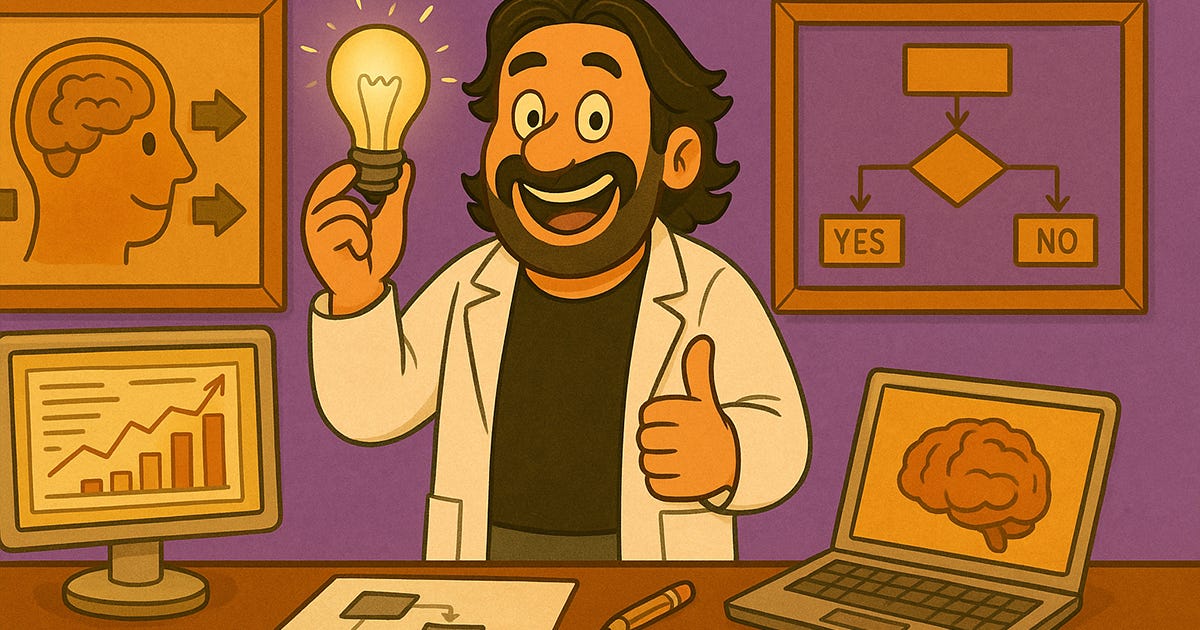🟢 SPECIAL UNLOCK — The Drift: Normally for paid subscribers only.
I'm sharing this premium Drift free to show you what The Upgrade Loop delivers each week.
How do we design decision making systems that evolve with digital systems and human minds?
We’ve been stuck in a loop.
Decision-making is changing.
It’s not about optimizing anymore.
It’s about rethinking how we make decisions.
Mental models matter.
They shape the decisions we make.
They shape the world we create.
It’s not just about faster decisions.
It’s about decisions that evolve with us,
and with technology.
To know how to do that,
we need to understand how we’re making decisions in the real world.
From the investigation so far,
two new signals have emerged:
How are our ways of thinking changing because of technology?
How does quick, automatic thinking affect the way groups and leaders make decisions?
Mental Models: A Quick Recap
Mental models shape how we see the world.
They’re the maps we use to navigate life.
They guide every decision we make.
They’ve always been central to how we process information.
But mental models weren’t always like this.
They used to be shaped by experience.
By personal interaction.
By trial and error.
Now?
We’re building mental models with data.
Through algorithms.
By machines.
The change?
Digital systems are shaping how we think.
They’re redefining what we assume.
They’re pushing us to rethink our frameworks.
Automatic Thinking:
Fast. Instinctive. Powerful.
Automatic thinking isn’t new.
It’s the brain’s survival system.
Fast. Unconscious.
We make decisions in the blink of an eye.
We’ve always relied on it.
It’s a lifesaver.
But in leadership?
In group decisions?
It can be a problem.
Here’s why.
Automatic thinking isn’t always the best.
It’s not always right.
It can create blind spots.
It can lock us into patterns.
But it’s everywhere.
In our meetings.
In our gut calls.
In leadership decisions.
We need to get smart about it.
Recognize when it helps.
And when it doesn’t.
Signal 1: Mental Models in the Digital Age
Here’s the thing.
Mental models are evolving.
They’re not static anymore.
Once, they were built through personal experience.
Now?
They’re shaped by digital interactions.
By AI.
By predictive systems.
We used to decide based on what we know.
Now, we decide based on what we’re shown.
Data-driven decisions come with assumptions built in.
AI doesn’t just predict.
It shapes our thinking.
It tells us what to look for.
It filters our choices.
We’re not always aware of the assumptions hidden in digital systems.
Old mental models clash with new tech paradigms.
And we feel that tension.
It’s cognitive dissonance.
But it’s where the future of decision-making gets interesting.
Signal 2: Automatic Thinking in Leadership and Groups
Automatic thinking is part of leadership.
It’s how leaders make quick calls.
Under pressure.
In high-stakes moments.
But it’s not just about gut feelings.
It’s about group dynamics.
How we make decisions together.
Automatic thinking runs the show.
It guides group behavior.
It’s what makes us say “yes” when we should say “no”.
It shapes how we agree.
How we compromise.
How we push forward.
But here’s the catch:
It can also lead us into blind spots.
It can close us off to new ideas.
To other perspectives.
So what’s the fix?
We need to pause.
Recognize when automatic thinking is working for us.
And when it’s not.
What These Signals Tell Us About the Future
For the future:
We need adaptive decision-making models.
Not just faster ones.
But smarter ones.
We need mental models that evolve with digital systems.
That adapt to new tech.
On the fly.
And automatic thinking?
We need to manage it.
Balance it.
Let it do its thing when it’s right.
But don’t let it run the show.
The future isn’t about avoiding the digital shift.
It’s about embracing it.
And using it to build smarter decisions.
Decisions that evolve.
Decisions that are both fast and thoughtful.
So the two new questions are:
How do we design mental models that evolve with the digital systems we use?
How do we train leaders and teams to recognize when automatic thinking helps—and when it doesn’t?
The future is here.
The digital age is moving fast.
But we can build it smarter.
We can build it adaptable.
🔁 Enjoy this drop?
🟢 This Drop is usually part of the premium tier.
Join the bold thinkers upgrading how they think each week — through science, sound, and smarter systems.
👉 Subscribe now to get the next upgrade loop.




